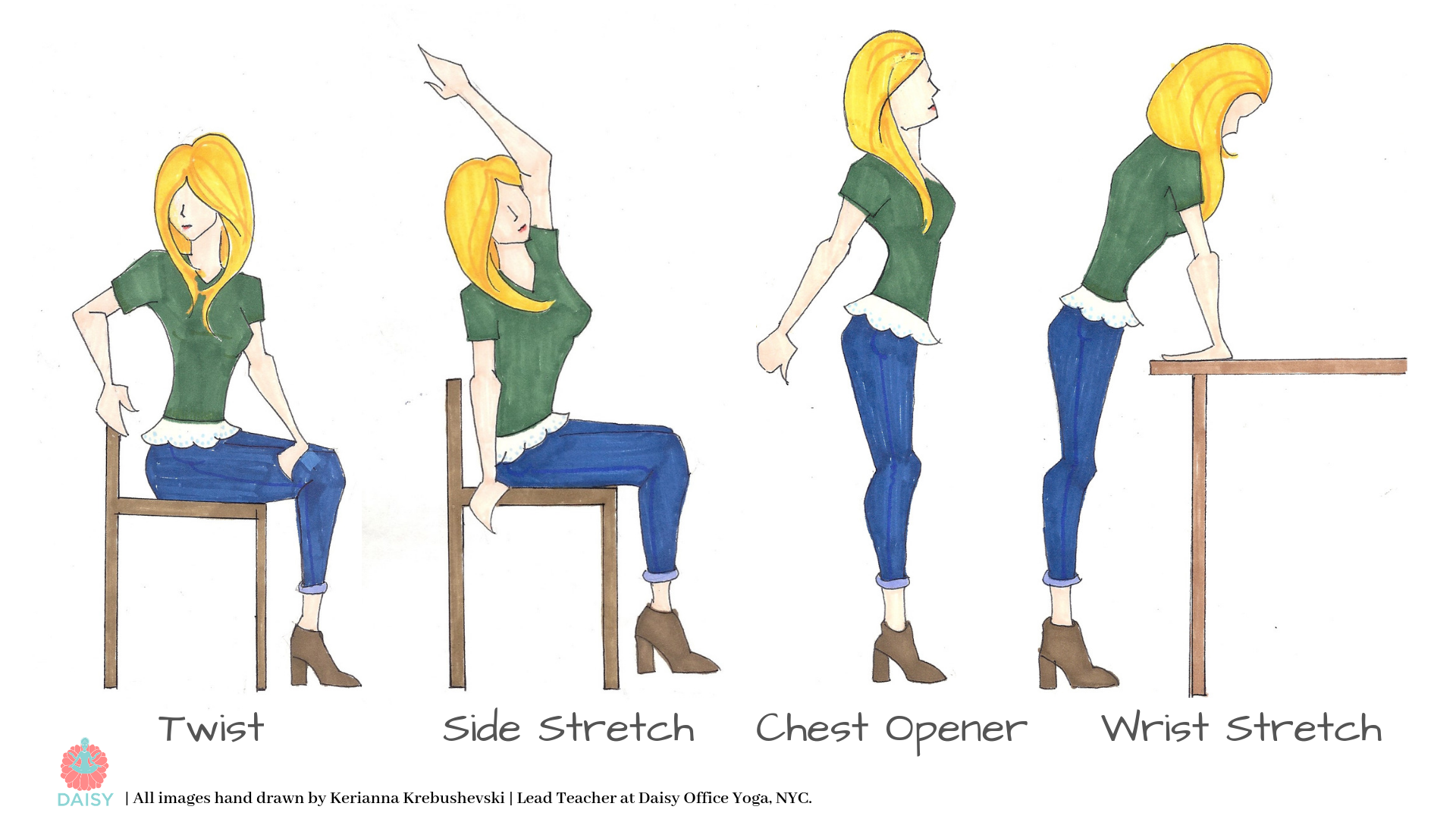Have you ever felt after a long day at work your wrists begin to ache, your neck and shoulder’s are sore, and you have a little thumping head ache behind the eyes? There are a number of issues in the common work place that contribute to poor health habits and lead to chronic stress and aches and pains in the body. Staring at screens all day can strain the muscles around your eyes and the bright lights and persistent notifications can set your nervous system to be in a constant state of fight or flight. Sitting in chairs all day can cause a myriad of issues with not only your physical health but also your mental health. In combination, if you are sitting with poor posture and bent over to write, read, type, and text all day, you may find yourself eventually dealing with a Repetitive Stress Injury.
So what is a repetitive stress injury?
When your head is perfectly balanced on your spine it feels light and supported. The farther your head is out and tilted down the heavier the relative tension on the larger muscles of your back and shoulders. They are over extended and STRAINING to hold on to that heavy skull of yours. That means tight and sore back and shoulders, which also means that the larger muscles of your upper back and shoulders are not supporting the movements of your arms. When the larger muscles cannot structurally support the constant and repetitive movements of the extremities (the typing, texting, writing etc.) the burden gets put on the smaller joints and can cause pain, swelling and numbing sensations in your wrists and elbows and constrict nerves in your arms (ex. carpel tunnel and tendinitis). These are called repetitive stress injuries (RSI).
Yoga can help counter balance many of the negative effects of work place ergonomics, but can specifically lessen the pain and heal RSI by:
- Making you aware of your habitual patterns such as your postural alignment and how you are sitting in a chair, helping you to recognize the source of your pain.
- Opening and aligning the upper body so that larger muscles can support and guide the movements of the extremities
- Develop and reinforce new, proper habits to prevent the return of pain.
A short yoga sequence to do at your desk!
The following is a little sequence you can do to become aware of tightness and tension in the body and use the breath to move and relieve compression in the joints, as well as stretch and align the muscles of the upper body. All these can be done at the comfort of your desk at work so you can continue your day with better posture and less pain!

Twist: Inhale the arms back up and as you exhale twist to your left, bringing the left hand to the back of the chair and the right hand to your left thigh or knee. As you inhale think of getting taller through the crown of your head and use that extra space to twist on the exhale. Repeat on the other side.
Side Stretch: Use your hand on the side of the chair for support as you stretch the opposite arm up and over. Try to keep the chest open by rolling your shoulders back. Feel the breath fill the side body and the ribs expand. Repeat on the other side.
Chest Opener: All good Chest Openers are good for posture. For this one you simply interlace the fingers behind the back and draw the hands down, rolling the shoulders together and expanding the chest. Try a forward fold with the arms overhead for an added shoulder and hamstring stretch!
Wrist Stretch: Place your hands palms down on a table or desk, but with the fingers either facing towards you or, for a slightly easier version, fingers pointing out to the left and right. Shift your weight forward and back, side to side, and/or around in circles to feel the stretch in your wrists and forearms.
See also:
Yoga international: Wrist Relief: 6 Poses for RSI (Repetitive Stress Injury)
Washington Post: The Health Hazards of Sitting


